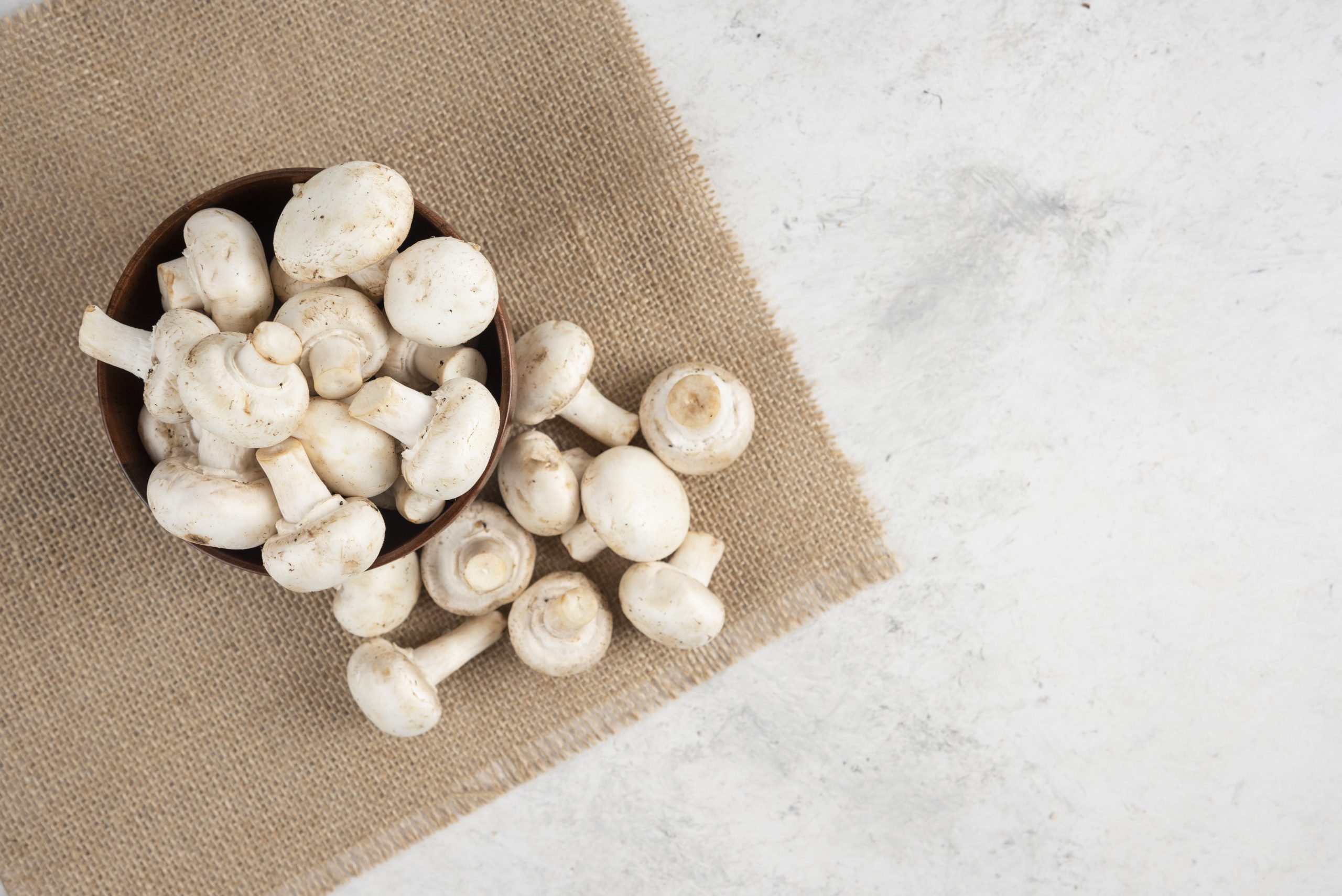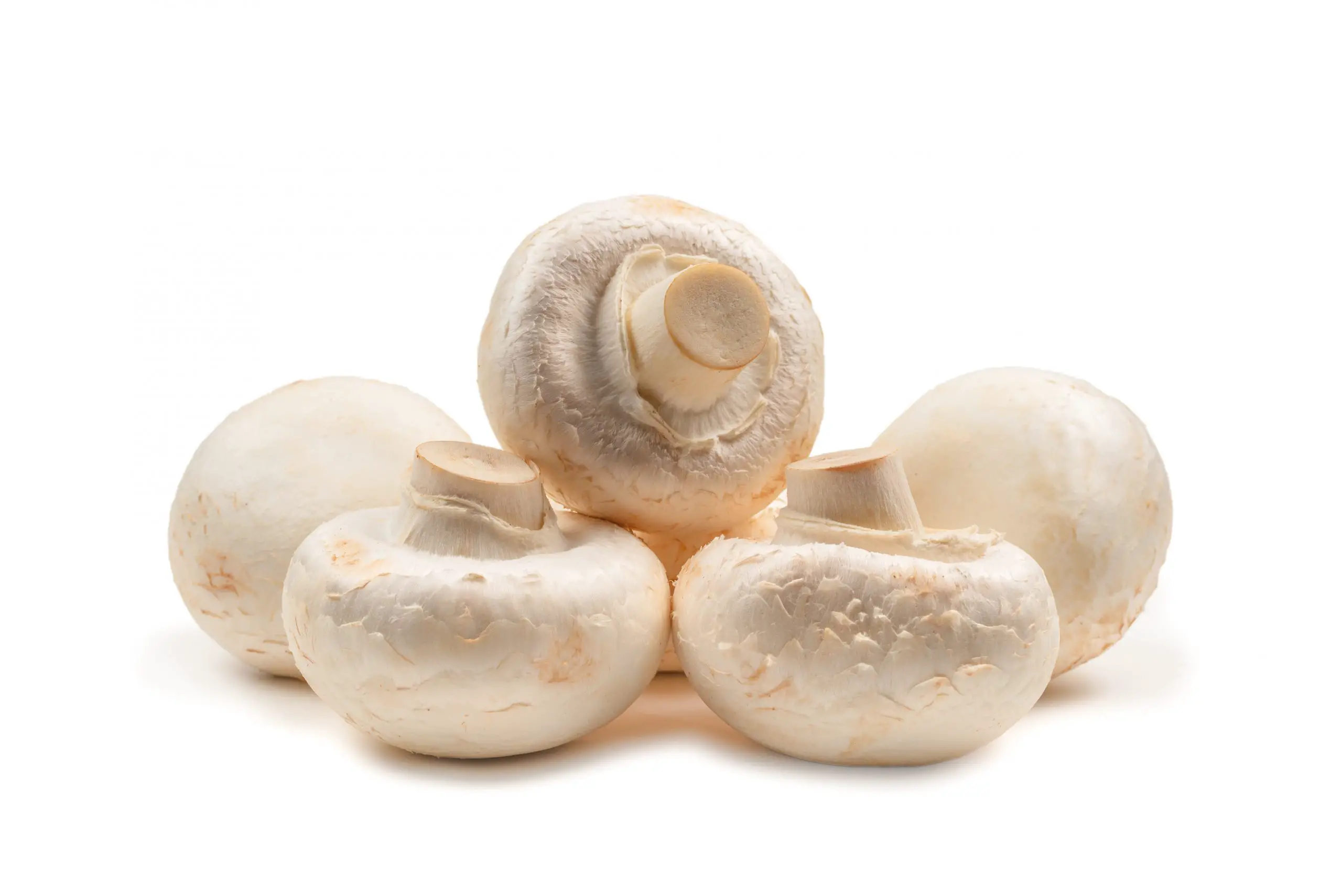If you enjoy eating mushrooms, you’ll be glad you stocked up on your preferred variety when they were in season. If you have extra, freeze them so you don’t waste a single one until you’re ready to utilize them in all your favourite foods. Pick mushrooms that are fresh-looking and smelling.

If you have a glut of mushrooms, freezing them is a great way to use them quickly and retain their benefits. At the height of their freshness, mushrooms should permanently be frozen. You can cook many delectable meals at home if you want to do it on a budget, and it would help if you learned how to freeze fresh mushrooms for this to be feasible.
How to Freeze Fresh Mushrooms?
Please continue reading to find out how to freeze mushrooms and get advice on how to cook with them.
Prepare Your Mushrooms
Check the Freshness of Your Mushrooms
Make sure your mushrooms haven’t gone bad before preparing them for freezing. Mushy and slimy mushrooms indicate that fresh mushrooms have gone wrong and will also turn a darker shade. Mushrooms must be firm and spotless before use.
Don’t Let Them Remain Frozen for Too Long
Fresh whole mushrooms keep for 7 to 10 days in the fridge when stored in an airtight container. In an airtight container, sliced mushrooms can be stored in the refrigerator for 4 to 7 days. Make sure to freeze mushrooms while fresh and within this time limit.
Clean the Mushrooms
Avoid washing mushrooms in water whenever possible. I mean, really! Even after being cooked, raw mushrooms will retain moisture like sponges and become mushy. To get rid of any dirt and debris, use a paper towel or a cleaning brush for mushrooms.
Steps to Freeze Mushrooms
Now that your mushrooms are ready, you may begin the freezing process. As previously said, fresh mushrooms absorb moisture; freezing them will boost their water content even more. When the mushrooms are thawed, they might become highly mushy.
As a result, it’s best to cook mushrooms before freezing them for the best flavour and texture. There are two main approaches to this:
1. Sautéing Method
Sauté the mushrooms before freezing to preserve their earthy flavour and hard texture. The amount of water in the mushrooms will be reduced with this way of cooking.
For freezing, sauté some mushrooms as follows:
- The mushrooms should be sliced. Alternatively, you might chop them into quarters or little cubes.
- One tablespoon of oil should be warmed in a large skillet over medium-high heat. Add the mushrooms to a single layer and cook for three minutes until they turn brown. Add extra oil as necessary while working in batches.
- Use paper towels to cover a plate or cookie sheet. Insert the cooked mushrooms here.
- Place the mushrooms in freezer bags after allowing them to cool. Remove extra air from the bags and adequately seal them to avoid freezer burn. On the bags, write the date.
- Place the mushrooms in the freezer and let them stay frozen.
2. Steam Blanching Method
Steam blanching mushrooms before freezing is another way. Blanching is a technique that has been used for centuries to preserve the flavour and nutritional content of vegetables before freezing them. The following are the steps in the blanching process:
- Slice, quarter, or cut the mushrooms into small cubes. You can even leave them whole if you choose.
- One teaspoon of lemon juice and 2 cups of ice water should be added to a bowl. Spend five minutes soaking the mushrooms. The mushrooms can be kept submerged by placing a small dish on top.
- Sliced mushrooms should be steamed in a steamer basket for 3 to 5 minutes, and whole mushrooms should be cooked for 5 minutes. Spend 3 to 5 minutes submerging the mushrooms in a cold water bath before draining.
- With a crisp towel, pat the mushrooms dry. Remove excess air before placing it in a freezer-safe bag, date, and sealing it.
- Frozen mushrooms are prepared by placing them in the freezer.
Nutritional Benefits of Eating Mushrooms
With mushrooms, you can’t go wrong. They have zero cholesterol, no fat, little sodium, and no calories. Additionally, they are rich in fibre, vitamins, and minerals. The nutritional advantages of various types of mushrooms differ. Overall, they are a good source of the following vitamins and minerals.
Antioxidants
Antioxidants aid in defending the body against the harmful free radicals that can result in diseases like cancer and heart disease. They also strengthen your immune system and guard you against aging-related harm. Selenium is an antioxidant that is abundant in mushrooms, and they are the produce aisle’s best source of the mineral.
Beta Glucan
A type of soluble dietary fibre known as beta-glucan has been closely associated with lowering cholesterol and promoting heart health. Additionally, it can aid blood sugar regulation, reducing your risk of type 2 diabetes. The beta-glucans in oyster and shiitake mushrooms are thought to be the most potent.
Copper
The production of red blood cells, which carry oxygen throughout the body, is aided by copper. The mineral is crucial for several other bodily functions, including preserving solid bones and neurons. One cup of sautéed mushrooms can still supply around one-third of the daily required copper intake.
Vitamin B
Riboflavin, niacin, and pantothenic acid are among the B vitamins that are abundant in mushrooms. The mixture safeguards cardiac health. Red blood cells respond well to riboflavin, and Niacin is beneficial for keeping healthy skin and the digestive system. The neurological system benefits from pantothenic acid, which also aids in the body’s production of necessary hormones.
Potassium
When it comes to heart, muscle, and nerve function, potassium is crucial. A medium-sized banana and 2/3 cup of cooked Portobello mushrooms have nearly the same amount of potassium.
Is it Possible to Freeze Raw Mushrooms?
Although raw mushrooms can be frozen, it is typically not advised. For this reason, freezing cooked mushrooms is preferable to raw mushrooms, which get pretty mushy when frozen and subsequently cooked. But if you must freeze raw mushrooms, just cut them up and put them in a freezer-safe bag.
How do You Flash Freeze Mushrooms?
Mushrooms can be added to bags or containers. However, some people prefer to flash freeze them first. To achieve this, arrange the mushrooms in a single layer on a baking sheet with a rim. Put the mushrooms in the freezer for about two hours or until they are solidly frozen. Transfer the frozen mushrooms into freezer bags using a spatula, then seal and date the packages.
How are Frozen Mushrooms Thawed?
The sort of food you’re creating will determine how to thaw frozen mushrooms. When making casseroles or soups that will be thoroughly heated, you can add frozen mushrooms right away. Avoid including them in dishes that require quick cooking or reheating since the mushrooms might not have had enough time to defrost thoroughly. The mushrooms can also be defrosted completely by just putting them in the refrigerator to thaw them out.
How are Frozen Mushrooms Used?
Depending on the recipe, you can either use frozen mushrooms straight from the freezer or defrost them first. The ideal choice will depend on your available time and how you want to use it.
Not sure how to include mushrooms into recipes? Here are some of our favourite mushroom recipes (or things that go well with mushrooms):
Cheesy Broccoli Soup: Make this dairy-free soup if you’re in the mood for something cheesy.
Vegan Vodka Sauce: Want a thick sauce? Try this vegan vodka sauce. Add frozen mushrooms to this sauce before boiling it.
Vegan Pumpkin Chili: Add mushrooms to this vegan pumpkin chilli before cooking to give it a meaty texture.
Vegan Sweet Potato Enchiladas: Add diced mushrooms to the filling when they have thawed.
Roasted Butternut Squash Soup: To this autumnal soup, add thawed sautéed mushrooms.
How do You Eat Mushrooms?
Mushrooms have a wide range of uses. They are highly versatile and go well with various other components. Grill, sauté, roast, or chop them up raw and throw them in a salad. Add them to Italian recipes, soups, sandwiches, wraps, and casseroles. For vegetarians, mushrooms work well as the main course or as a side dish. Due to their meaty texture, portobello mushrooms are frequently served as “burgers” or “steaks.”
With these nutritious recipes, try mushrooms in a variety of ways.
- The grilled mushroom skewers benefit significantly from the straightforward marinade. Use them as a side dish or vegetarian option at your upcoming barbecue.
- Cremini mushroom caps are used to make creamy spinach-stuffed mushrooms. The combination produces an attractive appetizer, and the cheesy core is simple to prepare.
- This vegan mushroom risotto is the healthiest thing you can eat. It’s perfect for folks with dietary requirements because it doesn’t contain gluten or dairy, and the risotto isn’t lacking in flavour or creaminess.
- The star of the roasted teriyaki mushrooms with soba noodles is a mushroom, not meat or tofu.
- The ideal hearty side dish is vegetables and mushrooms cooked in Italian style. Italian herbs are combined with mushrooms, tomatoes, and cauliflower to create a flavorful dish.
- These baked portobello mushrooms are the main filling dish for everyone, vegetarian or not.
- This mushroom, lemon, and lentil salad is the perfect light and healthful side dish, and it goes well with a range of main dishes.
It would be wise to do so if you don’t currently eat many mushrooms. Try out various recipes and increase the nutritional value of your meals.
Conclusion
You can freeze extra mushrooms if you buy more than you can consume at once to increase their shelf life and reduce food waste. Mushrooms can either be frozen, trimmed, and uncooked, or steam blanched, gently sautéed, and chilled before being put in an airtight, freezer-safe bag.
You’ll be happy to learn that mushrooms can be frozen. However, it’s worth understanding the best procedures for doing so rather than simply throwing them in the freezer and calling it a day. That’s because improperly frozen leftover mushrooms can quickly turn mushy and slimy.

